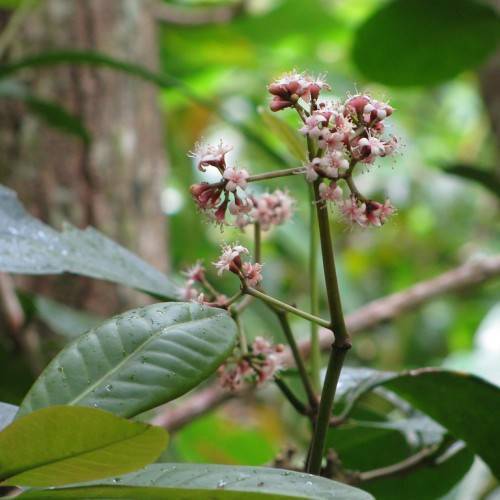
bird-catcher tree
Pisonia umbellifera
Cycle:
Perennial
Watering:
Minimum
Hardiness Zone:
10 - 12
Flowers:
Flowers
Sun:
full sun,part shade
Leaf:
Yes
Growth Rate:
Low
Maintenance:
Low
Poisonous To Pets:
Yes
Drought Tolerant:
Yes
Salt Tolerant:
Yes
Thorny:
Yes
Invasive:
Yes
Tropical:
Yes
Care Level:
Medium
watering
The Bird-catcher Tree (Pisonia umbellifera) requires monthly watering, and the amount varies depending on the season and how dry the root system is. During the warmer growing season (spring/summer) the tree should be watered thoroughly once per month, and during the cooler months (fall/winter), it should be watered less frequently, about every 4-6 weeks. To determine how much to water, check the soil and supplement water if the root system is dry, or if the soil is damp then reduce the amount of water.
sunlight
The bird-catcher tree is a tropical species which grows best in bright light and warm temperatures, making it ideal for many southern United States climates. This plant requires full sun or bright indirect light for at least 6 to 8 hours per day. For best growth, the tree should be exposed to the sun every day with 6 hour intervals of direct light. The sun should also be brightest during the early morning and late afternoon/evening for best exposure. Although the bird-catcher tree can tolerate some light shade, it needs consistent brightness in order to flourish. Consequently, its best kept out of direct afternoon sun to prevent leaf scorching.
pruning
Pruning of a bird-catcher tree (Pisonia umbellifera) may be done twice a year -- once in the spring (April to May) and once more in the fall (September to October). Heavy pruning is not recommended, so care should be taken to only remove dead and dying branches and any crossing branches. It is recommended to remove up to 1/3 of the annual shoot growth. If pruning larger mature branches, do so cautiously and cleanly to limit shock to the tree. It is also important to use clean pruning tools to prevent the spread of diseases.
